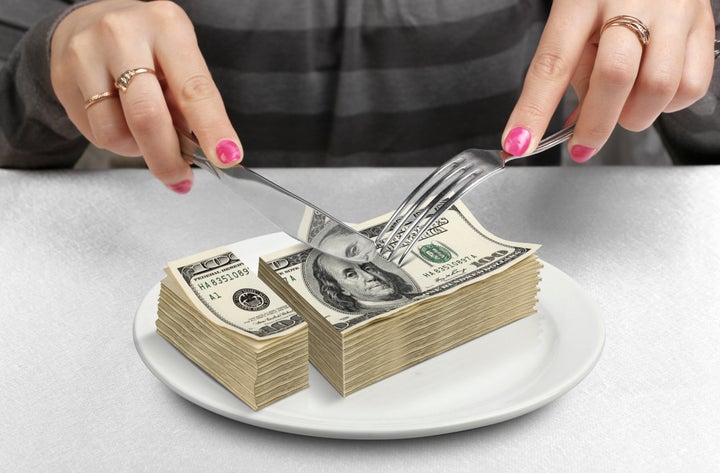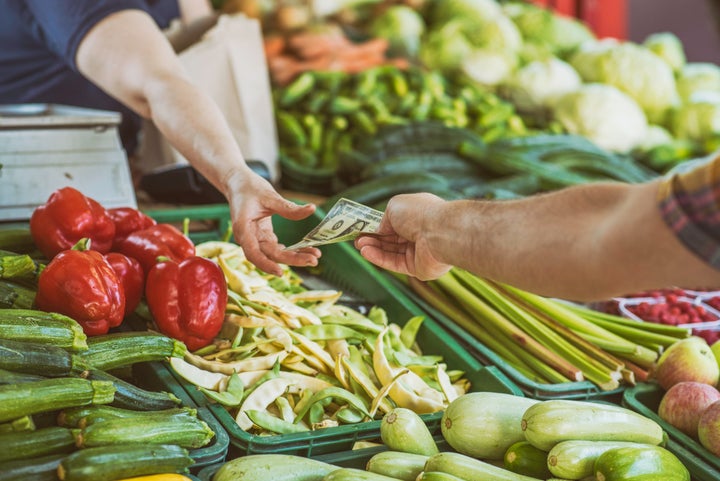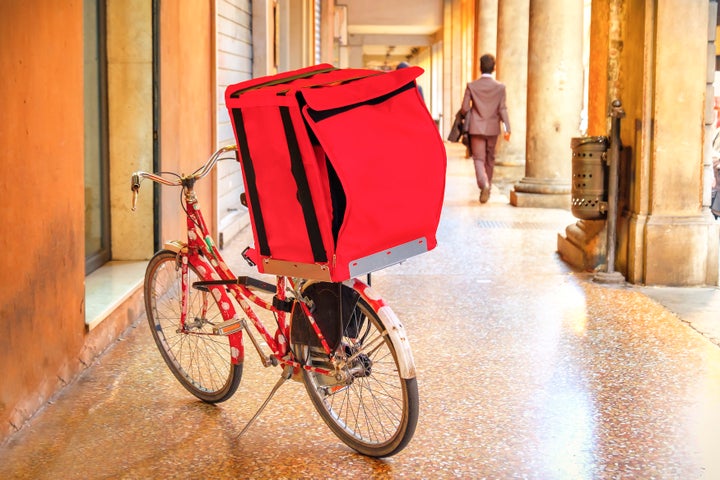So, how did that “50/30/20 rule of budgeting” work out for you last year? You know, the one that says we should all spend no more than 50 percent of our income on necessities, allow 30 percent for discretionary items and sock away at least 20 percent for savings? Hoping for better results this time, right?
Truth is, the 50/30/20 formula eludes most of us. Some 69 percent of Americans have less than $1,000 in savings, and that includes many people near retirement age. It’s understandable: Housing and rent prices are at all-time highs, our incomes don’t allow for much discretionary spending, and many people enter the workforce already in debt from college loans. Saving anything ― let alone 20 percent of a stretched-thin income ― seems highly challenging.

But putting together a real savings plan is totally possible, and in some cases, actually pretty painless if you make some strategic tweaks. In a nutshell, we need to stop wasting our money on convenience, says former CNBC host and personal finance maven Suze Orman.
Where to start? The average American household spends most of its money — 62 percent of an average $56,000 in annual expenditures — on just three things: housing, transportation and food.
Housing and transportation costs aren’t as flexible as food costs, which account for 12.5 percent, or just over $7,000, of the average budget, according to the Bureau of Labor Statistics. And people often fall prey to bank-draining conveniences when they buy food ― so it’s important spending category to focus on if you want to start saving.
Here are some tips to help you spend less on food this year:

1. Pay cash for food.
Studies have shown that people who use cash spend 12 percent to 18 percent less than those using a credit card, and McDonald’s reports its average check is $7 when people use credit cards, versus $4.50 for cash. There is probably no better budgeting tool than leaving your credit card at home or removing it from your delivery apps. Going to the grocery store with $50 in cash applies the brakes to impulse purchases.
Why? Cash is real. It is tangible. We are detached when we swipe our credit cards, but cash is something you can feel, and you can see it dwindle as you work through your allotted food budget.
Tip: Consider signing up for Withdraw Cash Wednesday, a brainchild of the ATM Industry Association that encourages consumers to keep cash on them and use it for everyday purchases because of its budgeting benefits and freedom from interest charges. WCW sends you reminders to refill your wallet every Wednesday and passes along information about how you will spend less and save more if you use cash instead of credit.

2. Stop buying too much at the grocery store.
The average American doesn’t eat 20 percent of the food he or she purchases, and every household throws away an average of $2,200 of food each year, according to a report from the National Resources Defense Council, an environmental advocacy group.
Since most of the food we waste consists of fresh fruits and vegetables, it behooves us to focus on two things: the quantity of perishable food we buy in the first place, and how to repurpose produce like the slightly limp zucchini we forgot about in the refrigerator.
The solution to the first part is easy: Buy only what you know you can and will eat, and not a green banana more. And for the latter, take a “waste not, want not” approach, and make a filling and hearty soup from the vegetables that have seen better days.
Tips: The key is meal planning. To avoid waste, shop for groceries with a list you compile after you figure out your meal plan.
Learn how to properly store fruits and vegetables for increased longevity. They should never go in plastic bags or plastic containers. And keep ripe fruit away from unripened produce, so the ethylene gas released by the ripe fruit doesn’t cause your other fruits and vegetables to ripen prematurely. Never leave produce in direct sunlight or in the refrigerator door.
Try the store-brand equivalent of the products you regularly use. They are almost always cheaper than the national brands and often, there isn’t a difference.

3. Share more, and order less when you dine out.
The average household spends an average of $3,008 each year on dining out, the Bureau of Labor Statistics reports. Some of us do more damage than others, but if eating out is breaking the bank, it’s time to deal with it.
Restaurant meals are often the dynamite that blow our budgets. The 2016 State of American Dining by Zagat reported that in New York City, dinners out cost an average of $48.44 per person. The national average is $36.30 ― still a gut punch to the budget.
But sit-down meals in restaurants are as much about entertainment as they are about food. We enjoy being served, hanging out with friends, savoring good tastes and not having to lift a finger to clean up the mess afterward.
So here’s a compromise: Continue to dine out, but take steps to spend less when you do.
Tips: Many restaurants serve oversized portions ― remember how Weight Watchers defined a serving size of chicken breast as the size of a deck of cards? ― so learn to share. Split an appetizer and entree on date night instead of ordering two of everything and tossing out the doggie bag two days later. You probably won’t go home hungry, and you’ve just cut your meal bill in half.
Or start the evening at home, and have your first cocktails or glass of wine there with some munchies. Cheese and crackers at home might even send you straight to the restaurant’s salad course. (Shared, of course.) And when it comes to desserts, maybe stroll to a bakery or ice cream shop, where they will undoubtedly be cheaper.

4. Save dining out for special occasions.
The more you do something, the less special it feels. Try saving those fancy meals out for special occasions only. Cook at home instead.
Most eateries charge a 300 percent markup on the food they serve. This means that any time you spend $30 on an entree, the ingredients for the food you’re eating only cost $10, according to financial services company The Motley Fool. You pay more in the restaurant because of the labor, service and business expenses.
So look at it this way: If the average household spends more than $3,000 dining out each year, the same meals prepared at home could possibly save an average household $2,000. The Motley Fool goes a little further: If you invest that $2,000 a year by not spending it on restaurants and takeout food and generate an average annual return of 8 percent, after 20 years, you’ll have an extra $91,000 for retirement.
Tip: Entertain more at home, with friends bringing potluck dishes. Check for discount coupons for your favorite restaurants on sites like Groupon and Living Social. Go to expensive restaurants at lunch rather than dinner; often, you can get the same selections at reduced prices. If you qualify, ask for a senior or AAA discount.

5. Cut down on commercially prepared meals and delivery.
For all the times you grab a bite on the way home because you’re too tired or unmotivated to cook, we can only say, “everything in moderation.”
The average American eats an average of 4.2 commercially prepared meals per week, or about 18 meals in an average month. This includes the multiple meals a week that UberEats delivers to the office, the dinners you pick up or have delivered, the delivery pizza you intend to reheat for lunch the next day but never do, and the occasional McDonald’s visits.
Meals like this cost an average of $12.75, according to the Bureau of Labor Statistics, and that doesn’t include delivery fees or tips. Can you commit to cutting those grab-and-go meals to once a week, or four times a month, instead of 18? That could save you a bundle, depending on how often you’re eating this way. Heck, even just going cold turkey on your $5-a-day Starbucks habit will save you $150 a month.
Tips: Commit to only grabbing takeout once a week. Each time you bring lunch from home or cook something for dinner, put $12.45 in your piggy bank and pat yourself on the back.
